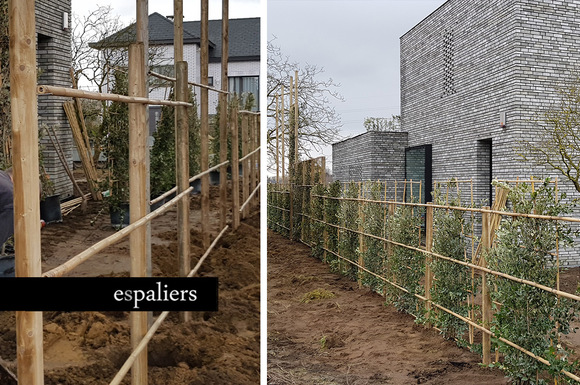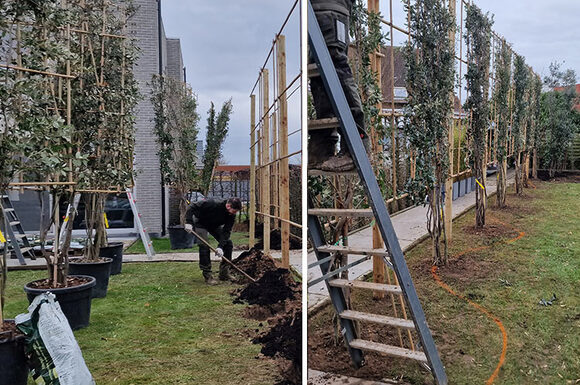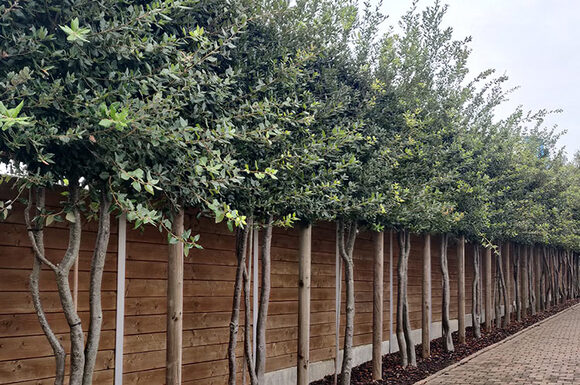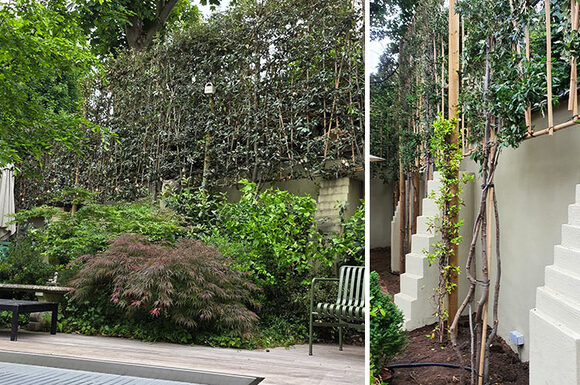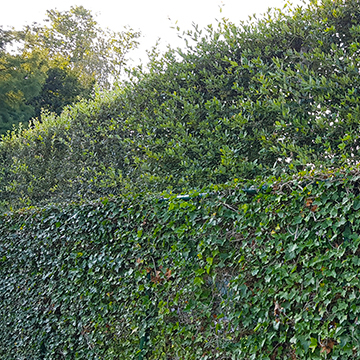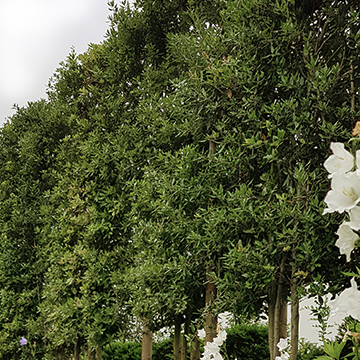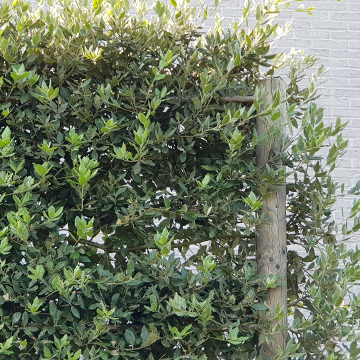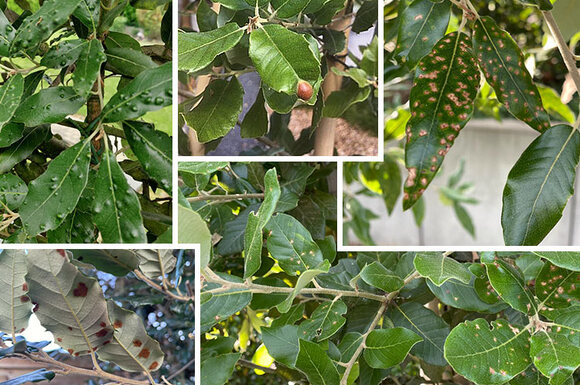Planting Distance for Evergreen Oak
Evergreen oak (Quercus ilex), when planted for privacy, can be arranged in three primary ways: as a natural informal buffer, as standard trees in a single row, or as espaliered trees.
For optimal results, all three options use an average planting distance of 2 meters. The more space available for growth, the wider this distance can be. In smaller gardens, trees may be planted closer together.
1. Planting as a Natural Informal Buffer
If there's enough space, this is the most organic form of screening.
Trees are placed informally, with height selected based on desired privacy levels.
Distance depends on required height and age at planting.
A thoughtful approach ensures maximum effect and minimal maintenance.
2. Evergreen Oak as Espaliered Screens
This is the most effective method for privacy, especially in smaller or space-conscious gardens.
Espaliered trees take up minimal space.
They maintain light and openness, even inside the home, while adding atmosphere to the garden.
The trees are easy to maintain and integrate naturally.
3. Standard Evergreen Oaks Planted in a Row
Previously, evergreen oaks were planted loosely in rows as full standard trees.
Only recommended where ample room is available, as maintenance is labor-intensive.
These trees occupy more space and reduce light, making informal setups or espaliered trees preferable.
Six Expert Tips for Successful Planting
1. Soil Type
Evergreen oak grows well in all soils—sand, clay, loam, rich or poor.
Vital: roots must receive air.
For heavy soils, improve structure using materials like lava granules.
2. Soil Moisture
If roots stay aerated, the tree tolerates wet conditions temporarily.
For overly wet soil, improve drainage or raise planting beds.
In extremely wet areas, planting evergreen oak is discouraged; opt for alternatives.
3. Wind & Support Stakes
Though wind-tolerant, newly planted trees need firm anchoring with at least two support stakes.
Without support, root development is hindered.
Once rooted, stakes can be removed.
Tip: secure tightly at planting, then loosen after a few months—natural slackening often occurs as materials adjust.
Let me know if you'd like a visual planting guide or help choosing a suitable alternative for wet soils. I can even help write copy for your garden advice pages.

